Specialities
General Dentistry
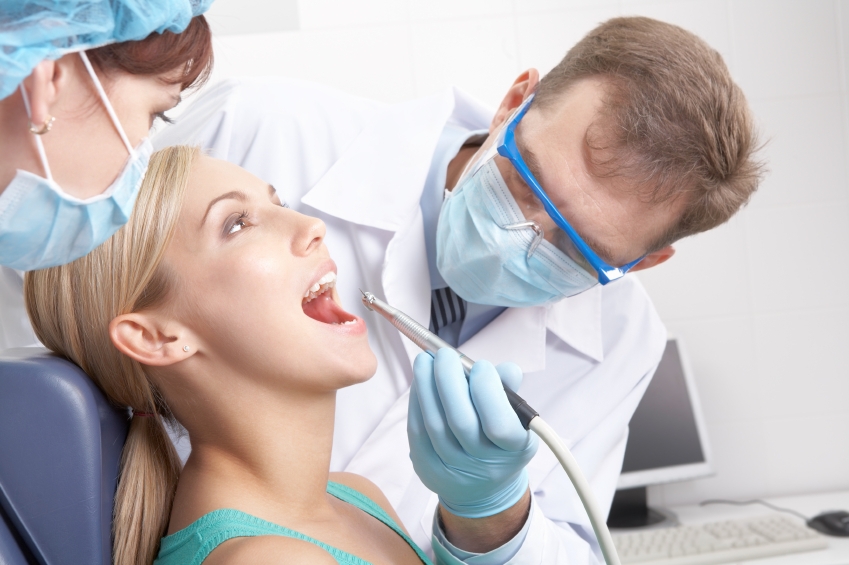
At Dr. Ashok’s Dentistree, our goal is to help our patients prevent cavities and dental diseases throughout their lives. We invest in the latest technology so we can provide the best preventative care possible. Our approach to treatment is conservative, but our approach to prevention is progressive.
Our dental services include regularly scheduled exams with the dentist, thorough teeth cleanings with highly trained dental hygienists, digital x-rays, and oral cancer screenings.
We strive to create an atmosphere where you and your family will feel comfortable and confident that you are in excellent care. Our dental team wants to help you maintain your teeth in their natural state as long as possible. Hopefully, in addition to a good home care regimen, we can help you keep your youthful, natural smile for a lifetime!
• Dental Cleanings & Regular Checkups
• Periodontal Therapy (Treatment of Gum Disease)
• Dentistry for Kids
• Fillings
• Crowns
• Bridges
• Root Canal Therapy (Endodontics)
• Extractions
• Dentures
Dental Implants

Dental Implants are the most remarkable achievement by modern dentistry and a precious gift for mankind; natural-like teeth look and functions! “They are really the next best thing to your natural teeth”.
Dental implant is essentially a substitute for a natural root & commonly it is screw or cylinder shape mead of titanium. Each implant is placed into a socket carefully and once fitted, these implants provided foundation for long-term support of crowns, bridges or dentures. With a few number of implants, decided by your jaw size & few other factors, fixed teeth are possible which completely preclude the need to the typical removable set of dentures which are not only uncomfortable to begin with but highly inconvenient.
TYPES OF IMPLANT SURGERIES
TWO STAGE IMPLANTS (CONVENTIONAL IMPLANTS)
First, implants, which looks like screws or cylinders, are placed into your jaw. Then, over the next two to six months, the implants and the bone are allowed to bond together to form anchors for your artificial teeth. During this time, a temporary teeth replacement option can be worn over the implant sites. Often, a second step of the procedure is necessary to uncover the implants and attach extensions. These temporary healing caps, along with various connecting devices that allow multiple crowns to attach to the implants, complete the foundation on which your new teeth will be placed. Your gums will be allowed to heal for a couple of weeks following this procedure.
SINGLE STAGE IMPLANTS (IMMEDIATE IMPLANTS)
- Immediate implants are also known as one day or same day implants. This is the case whereby dental implants is placed during the same time after teeth are extracted. Crowns, bridge, dentures may or may not be placed on during same trip depending on whether immediate loaded implants may be done. Immediate implants are normally recommended only for cases with good jaw bone conditions
AT Dr Ashok’s Dentistree, Delhi, implantology section collaborates internationally to provide world’s best dental implants with the greatest long term success for patients seeking cosmetic dental treatments and rehabilitation of lost teeth. The hospital’s implant clinic has to its credit the maximum number of successes in dental implant treatments using the latest implant techniques. Many difficult and complex types of dental implant procedures are being performed here with immense success. Instances where jaw bone is not sufficient for implant placement and hence not routinely treated elsewhere have been successfully done here with ease.
- Dental implants for thin jaw bone
- BMP & Dental Implants
- Distraction & Dental Implants
- Zygoma Implants
- All-on-4 dental implants
- Sinus lift and dental implant procedure
- Dental implants with bone graft
WE USE ONLY THOSE DENTAL IMPLANTS WHICH MEET THE INTERNATIONAL QUALITY STANDARDS, SOME OF THE BRANDS WE USE NOBLE BIOCARE, OSSTEM, ANKYLOS, BASAL, ADIN.
Orthognathic Surgery

Orthognathic surgery is surgery to correct conditions of the jaw and face related to structure, growth, sleep apnea, TMJ disorders, malocclusion problems owing to skeletal disharmonies, or other orthodontic problems that cannot be easily treated with braces. Bones can be cut and re-aligned, then held in with either screws or plates. Orthognathic surgery can also be referred to as corrective jaw surgery.
Orthognathic surgery is performed by an oral and maxillofacial surgeon in collaboration with an orthodontist. It often includes braces before and after surgery, and retainers after the final removal of braces. Orthognathic surgery is often needed after reconstruction of cleft palate or other major craniofacial anomalies. Orthognathic surgery is also available as a very successful treatment (90–100%) for obstructive sleep apnea. These techniques are utilized extensively for children suffering from certain craniofacial abnormalities such as Crouzon syndrome, Treacher-collins syndrome.
Careful coordination between the surgeon and orthodontist is essential to ensure that the teeth will fit correctly after the surgery.
Orthodontics

Teeth brace are more commonly called in India, is a routine treatment for a condition known in dentistry as “malocclusion. This condition means your teeth are not perfectly set. This could be either because they are crowded or crooked or prominent or because your jaw is not in perfect alignment. Such tooth and jaw alignment problems could occur due to injuries, thumb-sucking in childhood or simply malformation at birth.
Dental braces are usually recommended for children while they’re growing. Flaws in jaw structure, protruding teeth, cross bites and other problems become apparent in children from the age of 6 onwards. If a child is given braces from the age of 8 to 14, he or she gets optimal results.
This does not mean that adults can’t get braces. For adults, it is also the best dental treatment ever. It’s just that cosmetic or structural dental defects can easily be corrected in growing children. These days “orthodontics,” the branch of dentistry that deals with tooth and jaw reshaping, is sufficiently advanced to treat teeth displacement and jaw irregularities at any age.
“Dental braces offer both cosmetic and health benefits”!
The reason to go for perfect jaw alignment is not only cosmetic. A proper smile, in addition to beauty, gives you good oral health. Failing to correct crooked teeth or misaligned jaws can result in tooth decay due to food stuck in gaps between teeth, periodontal gum disease, speech impediment and chewing problems.
Types of Dental Braces
Modern orthodontic treatments offer a variety of options including both visible and invisible dental braces. They include titanium, stainless steel alloys, bonded lingual, ceramic and clear allingers.
Traditional metal braces involve brackets bonded to each tooth, connected in a series by arch wire, and tightened by ligature elastic. These arrange teeth by putting pressure on them. Springs or O-rings are sometimes used to concentrate force on specific areas or in a particular direction. Over time, teeth get aligned into proper positions.
Ceramic dental braces are an invisible alternative to metal braces. They are less noticeable and a proven way to straighten the teeth. Ceramic are the type of clear dental braces that usually match to our teeth color or come in clear brackets to fix to the teeth.
CLEAR ALIGNERS
WE ALSO USE CLEAR ALIGNERS WHICH offers the level of comfort, convenience and confidence. And no matter what stage you're at in life, you'll appreciate how our cutting-edge approach to treatment has minimal interference in how you live, but has a significant positive impact on how you look and feel about yourself.
- Clear aligners are virtually invisible
- Smooth comfortable plastic aligners
- Aligners are removable for
easy cleaning - Eat whatever you want
Facial Trauma
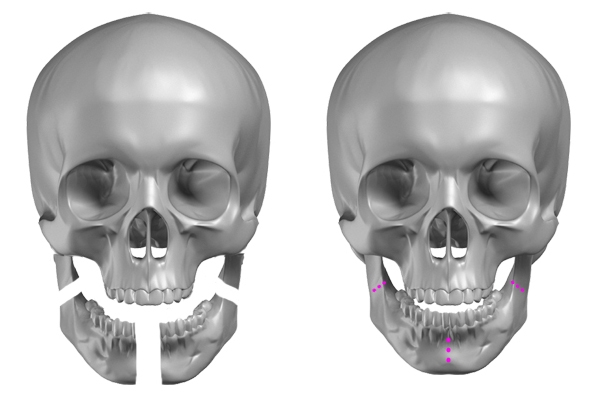
Whether the result of an accident or sports-related injury of the face or mouth, trauma can significantly change your appearance and can make breathing and eating difficult. Dr. Ashok is an expert in treating facial fractures and can repair most of these injuries through the mouth, eliminating visible scars.
Injuries to the face, by their very nature, impart a high degree of emotional, as well as physical trauma to patients. The science and art of treating these injuries require special training involving a “hands on” experience and an understanding of how the treatment provided will influence the patient’s long term function and appearance.
Facial trauma can range between minor injury to disfigurement that lasts a lifetime. The face is critical in communicating with others, so it is important to get the best treatment possible. In some cases, immediate surgery is needed to realign fractures before they heal incorrectly. Other injuries will have better outcomes if repairs are done after cuts and swellings have improved.
Pediatric facial trauma differs from adult injury because the face is not fully formed and future growth will be a factor in how the child heals and recovers. Certain types of trauma may cause a delay in the growth or further complicate recovery. Difficult cases require surgeons with great skill to make a repair that will grow with your child.
Maxillofacial Prosthesis
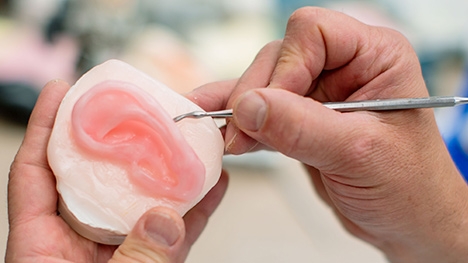
Maxillofacial Prosthetics is a subspecialty of Prosthodontics that involves rehabilitation of patients with defects or disabilities that were present when born or developed due to disease or trauma. Prostheses are often needed to replace missing areas of bone or tissue and restore oral functions such as swallowing, speech, and chewing. In other instances, a prosthesis for the face or body may be indicated for cosmetic and psychosocial reasons. Children can also be born without full development of ears, teeth, or palate and need specialized care. Maxillofacial Prosthodontists are accustomed to working cooperatively with ENTs, oral surgeons, general and specialty dentists, plastic surgeons, neurologists, radiation oncologists, speech pathologists, anaplastologists and various ancillary personnel. The overall goal of all maxillofacial prosthetic treatment is to improve the quality of life.
Smile Makeover
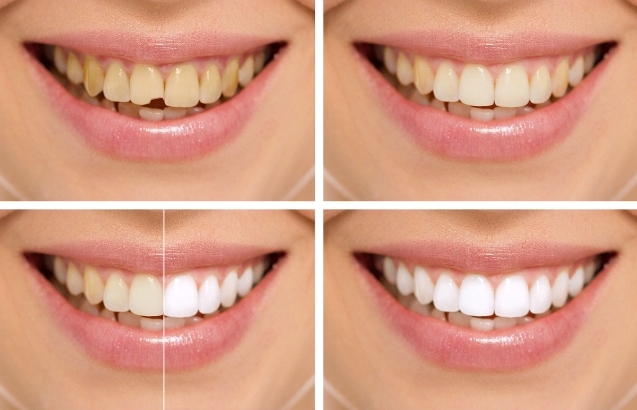
A smile makeover is the art of improving the appearance of the smile through one or more cosmetic dentistry procedures, such as teeth whitening (Bleaching), veneers, composite fillings & implants
A smile makeover takes into consideration all existing tooth color, width, length, shape of your teeth. Your facial appearance, hair color, skin tone, gum tissue and lips to carve a beautiful smile for you.
The smile makeover completely changes your:
- Tooth Color
- Alignment and Spacing
- Missing Teeth
- Harmony and Balance: Uneven, chipped and cracked teeth can be cosmetically bonded for an improved appearance, and a gummy smile can be re-contoured to help improve the overall look of the smile.
- Fuller Lips, Smile and Cheeks due to placement of teeth which previously looked sunken due missing teeth
- Esthetic Components of a Smile Makeover: In addition to the color, alignment and balance of your teeth in the esthetic zone of your smile (the section of upper and lower teeth that show when you smile), there are several attributes of your teeth and smile that we will evaluate with you when planning your smile makeover. Tooth Length, Smile Line, Tooth Proportions, Tooth Texture and Characterization.
Laser aided cosmetic & Dental Procedures
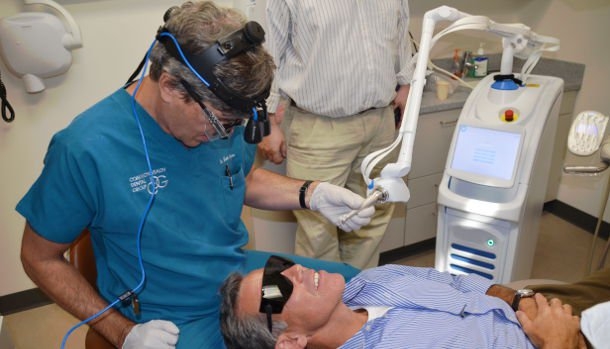
Lasers have long been the standard of care in medicine for many procedures – from LASIK vision correction to wrinkle and hair removal to various other surgeries. Dental Lasers are an exciting innovation to the practice of dentistry. Laser dentistry is capable of significantly minimizing discomfort, enhancing recovery times and improving the overall efficiency of the dental office.
Laser stands for Light Amplification by Stimulated Emission of Radiation. In essence, a dental laser is a medical device that generates a precise beam of concentrated light energy. This light energy combines with a gentle spray of water to perform a wide range of dental procedures with lesser trauma to teeth and gums than the conventional dental treatment procedures using a drill or scalpel. This beam sterilizes the area and can simultaneously coagulate blood vessels which minimizes the occurrence of infection(s) and/or bleeding. Patient discomfort is decreased and the need for anesthetic in many cases may be completely eliminated. Some of the applications of this technology include:
- Preparing cavities for fillings, without injections
- Reshaping gums to create a more attractive smile
- Treating dental needs in more than one part of the mouth in one visit
- This makes dental care a more relaxing experience for you!
Sterilization & Disinfection
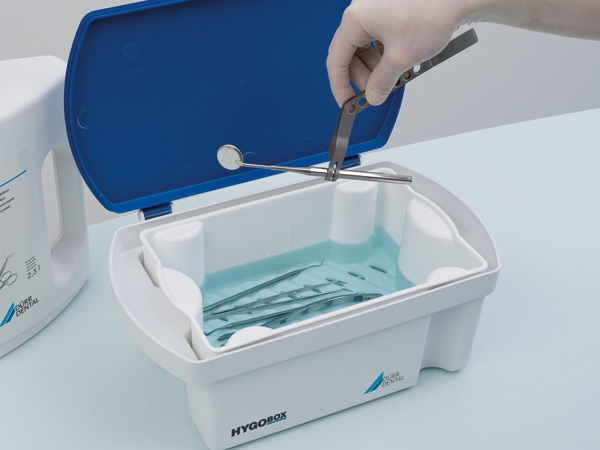
Dental clinics have been a focus of attention as dental instruments are possible agents for pathogenic transmission from patient to patient, from patient to doctor and vice versa. With the increasing risk of cross infections by Hepatitis B and HIV viruses, the dental facilities are bound to observe the same stringent rules in sterilization of instruments, and disinfection/maintenance of the operatories.
Sterilization is the complete elimination or destruction of all forms of microbial life and is accomplished in healthcare facilities by either physical or chemical processes. Disinfection describes a process that eliminates many or all pathogenic microorganisms on inanimate objects with the exception of bacterial spores. Method of sterilization that may be used for these instruments and materials that are heat stable include steam under pressure (autoclave), chemical (formaldehyde) vapour, and dry heat.
Out of these three methods steam under pressure i.e. autoclaving is the most dependable method of sterilization, where the instruments are exposed to steam under pressure of 15 pounds at 121 degree Celsius for 15 minutes.
We at Dr. Ashok’s Dentistree multispecialty dental hospital have always been taking the most strict measures to check these cross infections.
Infection control methods we follow:
- Our dentists and dental-team members wash their hands and put on a fresh pair of gloves before starting treatment. New disposable gloves, glass and napkins are used for each patient
- Masks and protective eyewear are worn during dental procedures
- Disposable supplies such as masks, wipes, paper drapes, suction/water tube tips, needles and scalpel blades, are used only once and then disposed off properly. Using disposable items is another way that dentists maintain a clean and sterile office.
- All surfaces are either covered with disposable plastic or disinfected prior to each patient’s use
The procedure for sterilization of instruments is:
All instruments, including hand pieces, are sterilized after each use and sealed.
- Instruments are first scrubbed clean to remove debris with spirit swabs.
All instruments are then placed in an Ultrasonic Cleaner to further dislodge any debris. - Then they are immersed in 5% Korsolex sterilizing solution for 45 minutes for standard disinfection.
- Dental Instruments, in sterile packages, are then stored in U.V.Chamber to maintain the sterilization, which are opened in front of the patient
We, at Dr. Ashok’s Dentistree follow all the disinfection procedures needed for infection control which is a priority.
- Our sterilization equipment is regularly checked to insure its effectiveness in killing all pathogenic organisms and a new pack of supplies is opened in front of the patient prior to the treatment.
- Surgical scrubs or over-garments are worn (we do not wear scrubs out of the office)
- All hazardous material is clearly labeled.
- Bio-hazardous waste material is separately stored and removed from the facility.
Never let uncertainty about safety keep you away from getting dental treatment done in India, or cause anxiety while you’re here, because your and our health is too important. We as health professionals are more susceptible to contacting infectious diseases while working on our patients. And therefore we follow stringent measures of sterilization and disinfection for everyone’s safety.
Dental Radiography
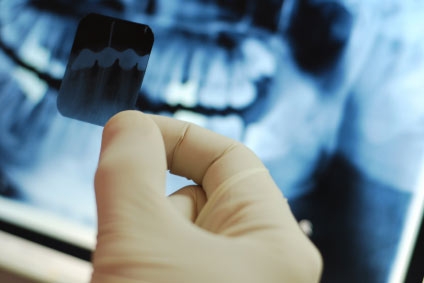
Digital full mouth panaromic x rays
An Orthopantomogram (OPG), also known as an "orthopantogram" or "panorex", is a panoramic scanning dental X-ray of the upper and lower jaw. It shows a two-dimensional view of a half-circle from ear to ear.
OPGs are used by Dentists to provide information on:
- Impacted wisdom teeth
- Periodontal bone loss
- Finding the source of dental pain
- Assessment for the placement of dental implants
- Orthodontic assessment
BENEFITS
- Broad anatomic region is imaged.
- Low radiation dose.
- Convenient, easy and fast. The entire procedure takes 14 seconds exposure time.
- Procedure can be performed on patients who cannot open their mouth.
- Easy for edentulous patients, patients who do not tolerate intraoral procedure well, patients with multiple tooth / Oral pathology.
- No overlapping of facial bones
Evaluation of trauma, third molar, extensive pathology.
- Evaluation of tooth development especially mixed dentation analysis.
- Evaluation of development anomalies like cleft palate.
- Minimal fluid inmaxillary sinus can be caught in his X-ray.
- Temporo mandibular joint pathology, dislocation or fractures can be clearly visualized without overlap.
- Styloid process visualization is very easily achieved.
- Multiple dental/oral problems caused by tobacco/Pan masala chewing in elders & Chocolates in children are caught by a single X-ray.
- Gross localization of Nasal Cavity/Ethomodial sinus/Maxillary sinus tumors & other pathology can be done at a very low price compared to the CT/MRI.
OPG is very useful for following faculties:
- Dental
- Maxillo facial Surgery
- Plastic Surgery
- Cancer Surgery
- Orthopaedic Surgery
- ENT Surgery